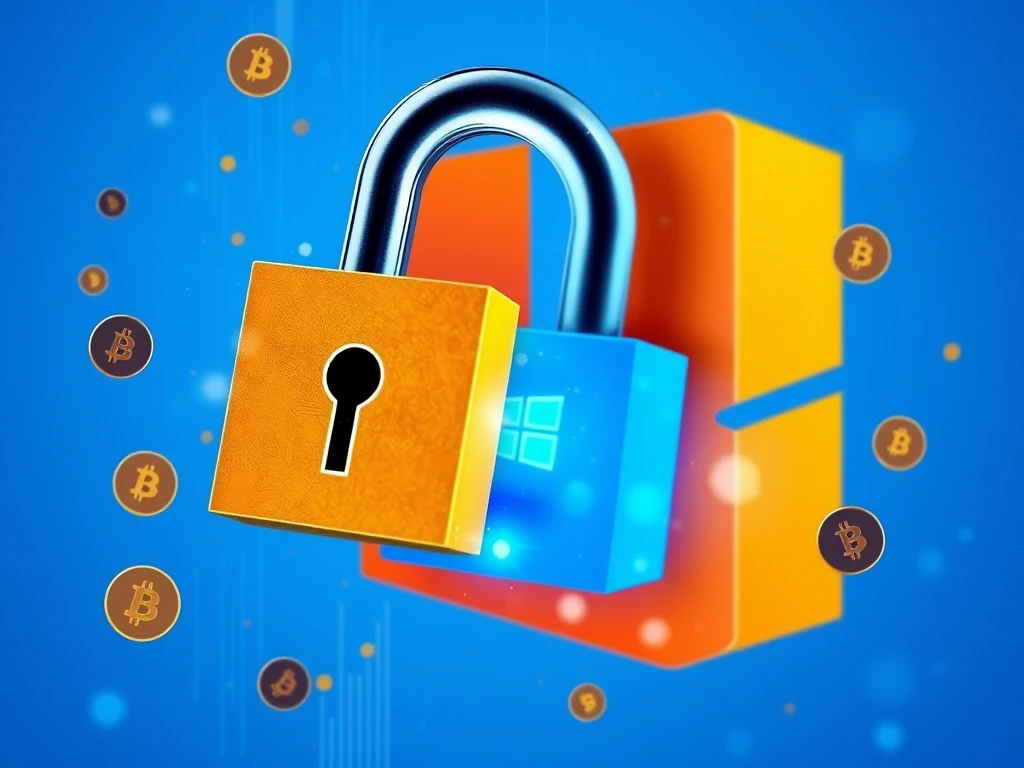Stealthy Crypto Malware Alert: Hackers Exploit Microsoft Office Add-ins in Shocking Address-Swapping Scheme

Urgent Alert for Crypto Users! A sophisticated new threat is targeting cryptocurrency holders through an unexpected vector: Microsoft Office add-in bundles. Imagine thinking you’re safely copying your crypto wallet address, only to unknowingly paste an attacker’s address instead. This chilling scenario is becoming a reality thanks to hackers who are cleverly concealing address-swapping crypto malware within seemingly harmless Microsoft Office extensions.
The Stealthy Crypto Malware Attack: How it Works
Cybersecurity experts at Kaspersky have uncovered a disturbing trend: malicious actors are embedding address-swapping malware, specifically a strain called ClipBanker, into fake Microsoft Office extension packages hosted on software download sites like SourceForge. These deceptive packages appear legitimate, even containing genuine Microsoft Office add-ins, but they carry a hidden payload designed to steal your cryptocurrency.
Here’s a breakdown of this alarming attack:
- Infected Bundles: Hackers create fake Microsoft Office add-in packages, which are then uploaded to software hosting platforms. One identified malicious listing was named “officepackage.”
- Hidden Malware: These bundles contain real Office add-ins to appear legitimate, but also secretly include ClipBanker crypto malware.
- Address Swapping: ClipBanker operates in the background, monitoring your clipboard. When you copy a cryptocurrency wallet address, the malware instantly replaces it with the attacker’s address.
- Silent Theft: Unsuspecting users paste the manipulated address, unknowingly sending their cryptocurrency directly to the attacker’s wallet.
This method is particularly insidious because cryptocurrency users often rely on copy-pasting addresses for transactions to avoid errors. ClipBanker exploits this common practice to divert funds without the victim realizing until it’s too late.
Why Microsoft Office Add-ins? An Unexpected Attack Vector
Why are hackers choosing Microsoft Office add-ins as a vehicle for their crypto malware? It’s a clever tactic for several reasons:
- Deception: Microsoft Office is ubiquitous and trusted. Users may be less suspicious of files associated with familiar software.
- Bypass Security: Users might not expect malware to be hidden within productivity tools, potentially bypassing initial security checks.
- Wide Reach: Millions of people use Microsoft Office, creating a large pool of potential victims.
The fake project pages on platforms like SourceForge are designed to mimic legitimate developer tools, further enhancing their credibility and making them appear in search results when users look for Microsoft Office add-ins. This sophisticated approach makes it harder for users to distinguish between genuine and malicious software.
ClipBanker Malware: More Than Just Address Swapping
The address-swapping malware, ClipBanker, is not just limited to stealing cryptocurrency. Kaspersky’s report reveals additional malicious functionalities:
- Data Exfiltration: Infected devices transmit information, including IP addresses, country, and usernames, to the attackers via Telegram.
- System Scan: The malware checks for previous installations or antivirus software. If detected, it can self-delete to evade detection.
- Potential Backdoor: Kaspersky warns that attackers could potentially sell access to compromised systems to other cybercriminals, expanding the scope of the threat beyond cryptocurrency theft.
Interestingly, some files within the bogus download packages are suspiciously small, a potential red flag. To mask this, attackers pad other files with junk data to create the illusion of a genuine, larger software installer. This highlights the lengths to which cybercriminals will go to deceive their victims.
Who is at Risk from this Crypto Malware?
While Kaspersky’s telemetry suggests that a significant portion (90%) of potential victims are in Russia, with over 4,600 users encountering the scheme between January and March, this crypto malware threat is not geographically limited. Anyone who downloads software from untrusted sources and uses cryptocurrency wallets is potentially vulnerable.
The Russian language interface of the malware may indicate an initial focus on Russian-speaking users, but cybercriminals often adapt and expand their targets. It’s crucial for cryptocurrency users worldwide to be aware of this evolving threat.
Protecting Yourself from Address-Swapping Crypto Malware: Actionable Steps
The key to avoiding falling victim to this address-swapping malware and other similar threats lies in practicing safe software download habits and robust cybersecurity hygiene. Here are crucial steps to take:
- Download from Official Sources ONLY: Always obtain software, especially Microsoft Office add-ins or any crypto-related applications, directly from official websites or trusted app stores. Avoid third-party download sites, torrents, or unofficial sources.
- Verify Software Legitimacy: Before downloading, carefully check the developer’s website, reviews, and online discussions to confirm the software’s authenticity. Be wary of projects with few details or negative feedback.
- Antivirus Software is Essential: Ensure you have reputable antivirus software installed and that it is regularly updated. This can help detect and block malware before it infects your system.
- Be Skeptical of Small File Sizes: As Kaspersky noted, unusually small file sizes for software installers should raise immediate suspicion. Genuine applications, especially office suites, are typically large.
- Double-Check Wallet Addresses: Before sending any cryptocurrency transaction, meticulously double-check the recipient’s wallet address, even if you have copy-pasted it. Verify the first and last few characters to ensure accuracy.
- Regular Security Scans: Perform regular full system scans with your antivirus software to detect and remove any potential malware infections.
The Ever-Evolving Threat Landscape of Cryptocurrency Theft
This incident underscores the persistent and evolving nature of cyber threats targeting cryptocurrency users. Hackers are continuously developing new and sophisticated methods to steal digital assets, ranging from address-swapping malware to fake overlay attacks on mobile devices. Staying informed, vigilant, and proactive in your cybersecurity practices is paramount in the fight against cryptocurrency theft.
As the cryptocurrency space continues to grow, so too will the efforts of cybercriminals to exploit vulnerabilities. By understanding the tactics they employ, like hiding crypto malware in Microsoft Office add-ins, and taking preventative measures, you can significantly reduce your risk and protect your valuable digital holdings.







